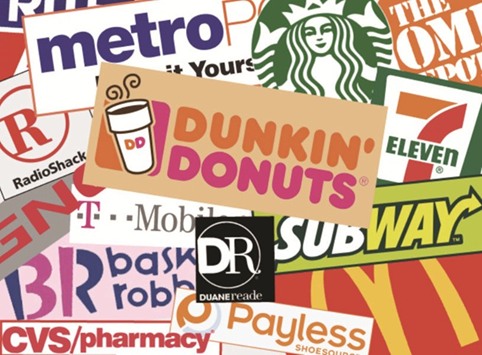Dylan first heard Levon and the Hawks – the band who would become The Band – in 1965, at a club on Yonge Street in Toronto called Friar’s Tavern.
Yonge Street in those days was hip. An offshoot of the Yorkville neighbourhood – whose many music clubs helped give rise to Neil Young, Joni Mitchell and the Toronto Sound – Yonge was replete with bars, clothing stores, venues and vice. It was, as Robbie Robertson put it, “the centre of Toronto’s nightlife and entertainment”. According to Richard Pritchard, co-owner of the clothing boutique Cat’s Cradle, which has overlooked the street since 1972, Yonge Street was more or less ground zero for Toronto’s cultural scene. “Whether you lived nearby or not, you would come to this area and spend a day,” he says.
Few would talk about Yonge Street that way now. Friar’s is gone, along with most of the other live music venues, and the city has cracked down on the street’s seedier elements, which in the 1980s and 90s gave Toronto’s underbelly a face. Now Yonge is dominated by a vast, concrete public square at the intersection of Dundas Street, walled on three sides by multi-storey facades of bright corporate advertising. Nightclub neon has been replaced with white LEDs. There’s a Nordstrom across the street.
Moving into the Friar’s space (which for many years after Friar’s closure was a Hard Rock Cafe) is, reportedly, a Shoppers Drug Mart – the sprawling Canadian pharmacy chain that is owned by an even larger grocery chain, and already has two other locations nearby. The Shoppers branch would join a section of Yonge already full of chain stores – not to mention sitting directly across from the largest indoor shopping mall downtown.
Normally, a Hard Rock Cafe – itself a chain – giving way to a pharmacy might not prompt dismay. But the move has sparked a debate in Toronto about what exactly its streets are for.
“If this particular drug store brand goes in, and does the exact same thing they do in every other case – they put one door at each end and they wrap the whole thing in an advertisement – that’s not adding to the dynamic of the neighbourhood,” says Toronto city councillor Mike Layton. “That’s in fact taking a sledgehammer right to the heart of it.”
Layton has not proposed that the city block the new Shoppers store, but has suggested it study how to limit chain stores generally.
Toronto is “a city of neighbourhoods”, he says. “It’s important for us to make sure the neighbourhoods have something different between them.” Although he stresses that his suggestion is only a motion to investigate the idea, he already has some support.
“We’ve got to have a conversation about: what is the need of the neighbourhood? What makes a great neighbourhood?” says Mark Garner of the non-profit Yonge Business Improvement Area. “How do you preserve small independent business based on what a neighbourhood needs? Our neighbourhoods used to be great. You used to be able to walk to your butcher, your dry cleaner, the fruit stand to pick up your stuff … and you had relationships with those small, independent, family-run businesses.”
Although banning or limiting chain stores is a controversial way of trying to help small businesses, it has boosters – and precedent.
In 2006, Nantucket, Massachusetts, banned chain stores from its downtown. In 2015, Jersey City in New Jersey voted to restrict chain stores to 30% of ground-floor commercial space in its downtown core, with some exceptions. That same year a community group in New York City’s East Village released a report proposing limitations on chain stores. This area of Manhattan already restricts store frontage sizes and certain changes of store use, but the East Village Community Coalition argued for more: “Placing restrictions on formula retail establishments via zoning amendments provides a path to preserving the rapidly changing East Village,” it said.
Most famously, in the mid-2000s the city of San Francisco adopted policies to limit chain stores, known as “formula retail”. Broadly speaking, the city defines formula retail as stores with 11 or more locations anywhere in the world, a uniform aesthetic, and a few other criteria. The rules differ neighbourhood by neighbourhood: some areas welcome formula retail, others don’t.
One of the strictest neighbourhoods in San Francisco is Hayes Valley, which has an outright ban on formula retail (although recently allowed Kit & Ace to open a shop).
Hayes Valley was once partly covered by the elevated Central Freeway, which was demolished after an earthquake in 1989. Relieved of the freeway, the neighbourhood – once an area many San Franciscans avoided – became fashionable almost overnight.
“It just flourished like crazy, because it was suddenly under sunlight,” says Dee Dee Workman, vice president of policy for the San Francisco Chamber of Commerce.
But Workman also argues that the decision to ban chain stores, rather than make the neighbourhood more community-oriented, had the opposite effect. “There used to be a lot more of neighbourhood-serving retail there … retail that people could really use,” she says. The ban on chain stores changed that. “What you have now are a lot of non-neighbourhood-serving retail: very, very high-end expensive little boutiques, selling super expensive shoes and purses and things.”
This excludes residents, she argues. “The people who have traditionally lived in that neighbourhood, who are lower-income and are hanging on by their fingernails, there’s really nothing there for them,” Workman says. “I would say in that case, the formula retail ban is counter-productive.”
A different experiment has taken place in Britain, where successive Labour governments have attempted to combat the Thatcher-era encroachment of gigantic superstores and supermarkets on city centres, with planning guidelines that limit square footage – effectively making it difficult to open large retail spaces.
The result was a proliferation of smaller spaces. Tesco, for example, is just one of the supermarkets that has studded British urban high streets with small branches such as Tesco Express or Tesco Metro. In 2011, Bristol residents protested the opening of the city’s 32nd Tesco outlet, in the funky neighbourhood of Stokes Croft. When police moved into break up the protest, a violent confrontation ensued and the Tesco was severely damaged (though it remains there today).
Harvard Business School’s Rafaella Sadun has used the British example to examine whether planning regulations protect independent retailers. She concluded in a 2013 report that the regulations backfired: the big chains simply set up smaller outlets.
“Independent retailers were actually harmed by the creation of entry barriers against large shops,” Sadun wrote. “Instead of simply reducing the number of new large stores entering a market, entry regulations created the incentive for large retail chains to invest in smaller and more centrally located formats, which competed more directly with independents and accelerated their decline.”
It was a similar case in Vermont, where a longstanding ban on big-box stores failed to prevent the proliferation of discount “dollar store” chains, which squeaked in under the zoning limits. In 2012, the residents of Chester sued Dollar General for opening a store near the town centre. The case went to the Vermont Supreme Court, which ruled in favour of Dollar General.
France has had tough regulations against large chain outlets since 1996, when the Raffarin law restricted the size of hypermarkets (strengthening a similar regulation from 1973). By 2009 , according to the Organisation for Economic Co-operation and Development (OECD), the floor area of hypermarkets was around 20% less than in the UK.
But the OECD reported that while the laws “have not really succeeded in halting the steady decline in the ranks of small shopkeepers, they have helped stabilise the market share of small-scale food retailers”. However, the laws also “allowed the large, long-established groups to strengthen their market position, undermining competition in many regional markets”.
Nevertheless, the idea of limiting chain stores appears to be catching. Shortly after Layton’s proposal in Toronto, a group in Vancouver floated the idea that the city should not only ban chain stores from certain areas, but tax empty storefronts, too.
“Many whole blocks of independent businesses are taken out, and what might go in are one of the big five banks and chain stores,” Amy Robinson of LOCO BC told CTV News. “What we’re really concerned about is the loss of affordable space for independent businesses.”
That’s exactly what small businesspeople like the Cat’s Cradle owner Pritchard and his co-owner Mark Citron on Yonge Street have seen: a once-vibrant area dry up. To them, regulation of some kind sounds like a good start to controlling not only who operates in the area, but perhaps their ever-rising taxes as well.
“The corporate stores, the bigger box stores, basically took over this whole industry. And they had the help of the government, because they were creating jobs,” says Pritchard. “But the small businesses were completely ignored to the point where it became rare. This kind of store is now rare.”
“I mean, this is Yonge Street,” chimes in Citron. “It’s the de facto main street of Toronto. It should have been treated like gold.” — Guardian News & Media

Banning or limiting chain stores is a controversial way of trying to help small businesses.


